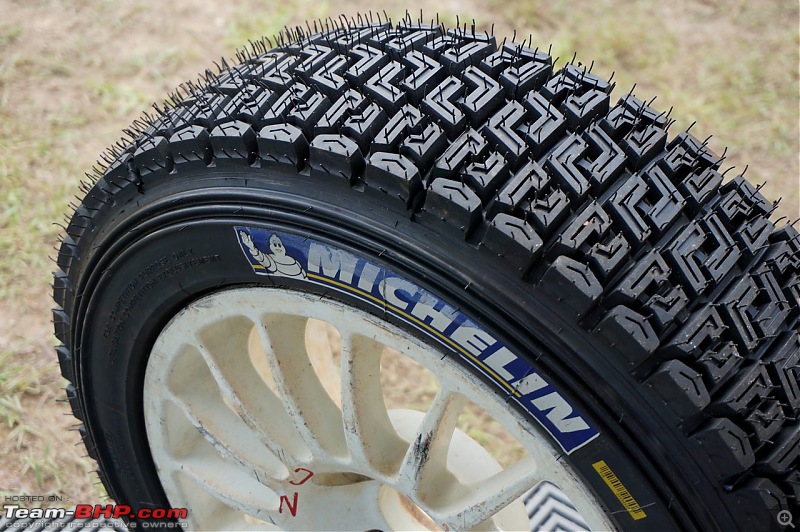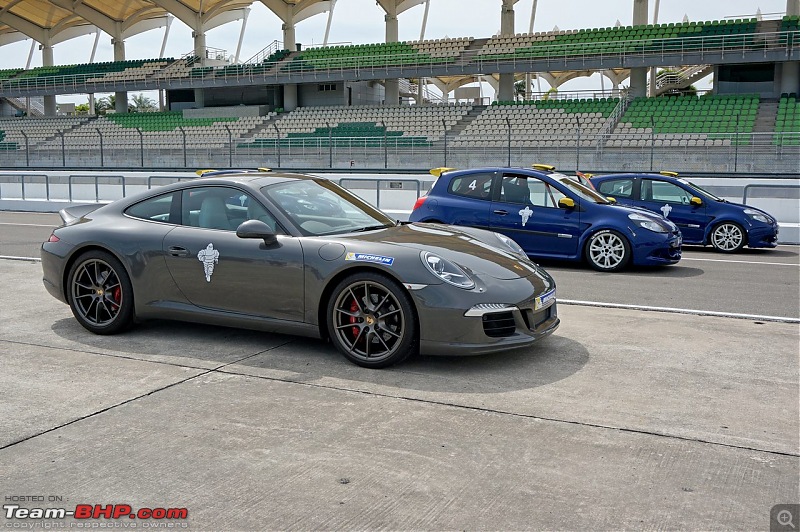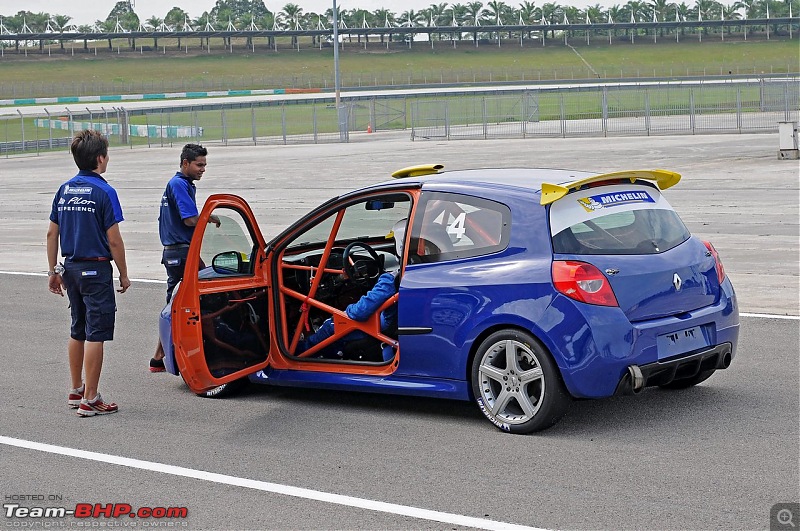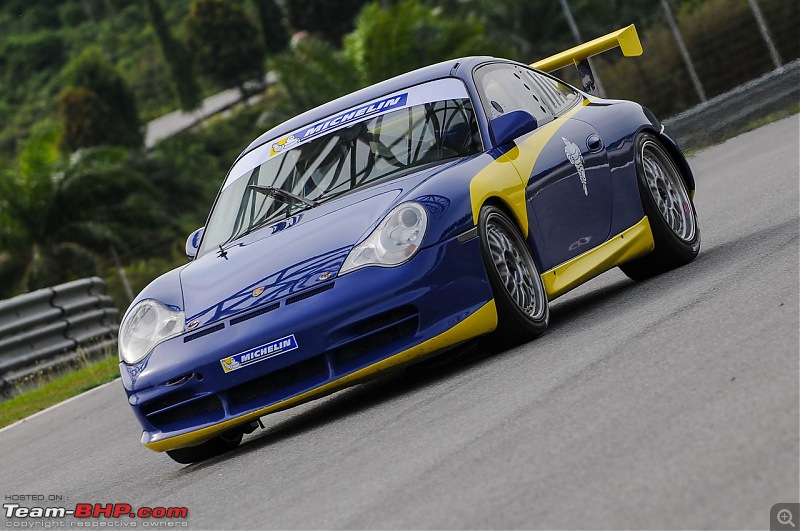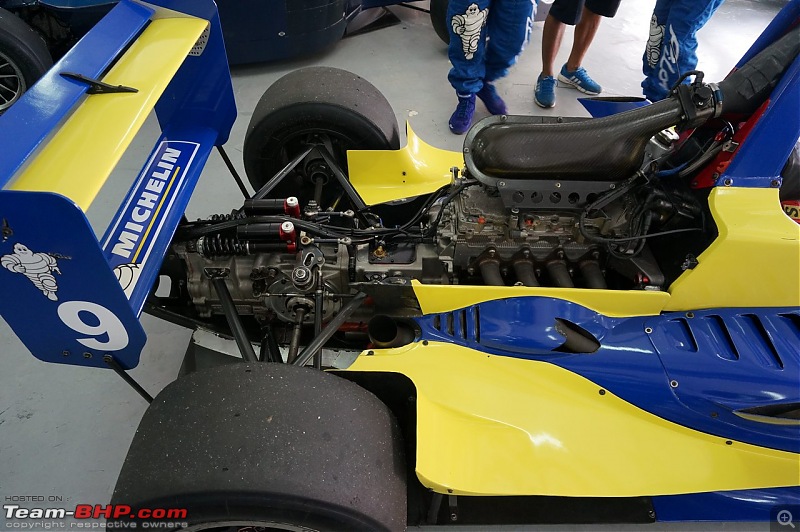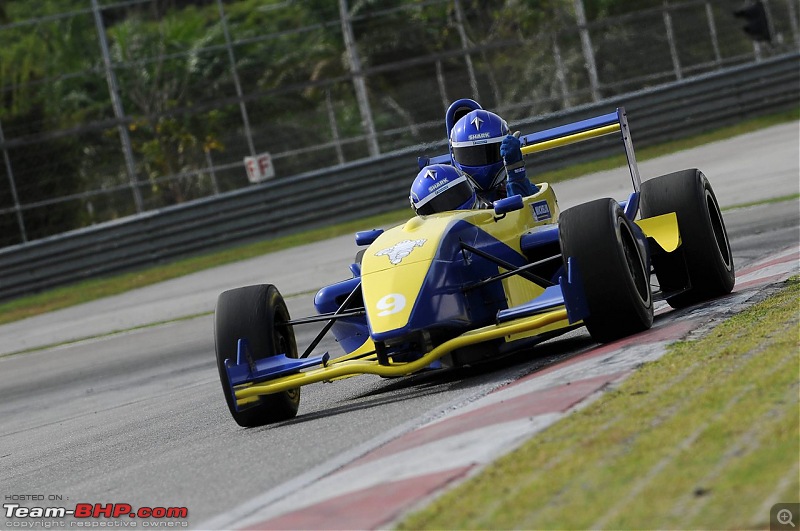The Formula Michelin Cars 196 BHP / 480 kgs / 0-100 in 3.5 sec
The batch I was in was the first to get their hands on the Formula Michelin cars. (The others started off with the Rally cars and Clio Cup cars).
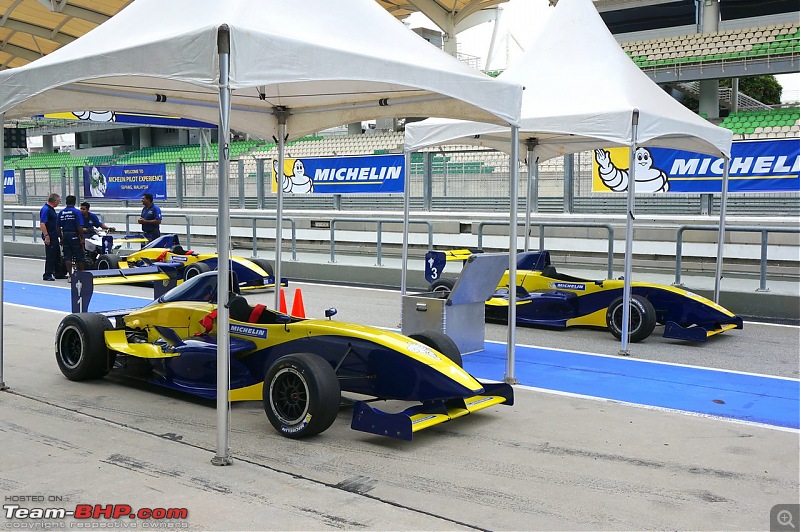
The parked racecars looked extremely tempting, but first we had to go through the track familiarization, as well as a crash course on driving the car (with its sequential gearbox and fussy clutch).

The safety cars: a spanking white 911 Carrera 4S and a jet black Lotus Exige waited patiently in the pit lane. Despite both being incredibly accomplished performance cars, they would still have a tough time setting pace for the much lighter and track-focused formula racecars, especially on the corners.

If Darth Vader was a car, this would be him. Interestingly, all the safety cars were running road-legal Michelins (rather than slicks). This is because of a few reasons: firstly, the Porsche wasn't set up for slicks (which can put a lot of extra load on the electronic differential), secondly, there had been a spattering of rain - and what use is a safety car if it's unsafe in the rain! The Exige however was the only exception. It was running slicks - but that was because of some logistical issues with getting super sport tyres for the smaller wheel size that the Exige uses.

Believe it or not, this was the first car we'd be taking out onto the circuit. All 7 of us together - just to get familiar with the track.

Benjamin Rouget was our instructor in the van. As he drove us around the track, he told us which gear/s to use for each corner, and what the cones for each corner meant (braking points, turn-in points, apex markers and exit markers). For anyone driving on track for the first time, or unfamiliar with a track's layout, these marker cones are invaluable.

After that, it was time for a little theory. Though the Formula Michelin cars rev up to 7000+ RPM, our cars were limited to about 5,200 - 6,000 RPM. This made them a lot safer for non-experienced drivers (since it cut of the top whack of the power-band) and also made them a fairer match for the safety cars. Note the shift pattern for the sequential gearbox at the bottom right.

The gearshift simulator was a Formula Michelin car strapped down to a rolling road. It let us get familiar with the extremely fussy clutch (used only for getting the car moving), and of course the weight and feel of the gearshift lever and pedals. Sequential shift boxes are wonderful on track. They are pure and direct like a manual transmission, without the need for a clutch (since they use straight-cut 'dog gears' rather than helical gears). There is a clutch, but you don't need to use it. You just bang the gear-lever forward to shift down a gear, and pull it back to shift up a gear (similar to a motorcycle gearbox).

The foot-well was extremely tight and the pedals were very close together. There were one or two times I wasn't sure if I had moved my foot over to the brake pedal (it was a fairly hard pedal, since the brakes weren't boosted). However, the good news was that there was no room for my foot to go anywhere else! Of course it was on the brake.

The air scoop here was just for cooling, not the engine air intake. Here you can catch a glimpse of the naturally aspirated Renault 2-liter block.

No traction control. No ESP. No ABS. No power steering. No power brakes. It had been a while since I drove a 'real' car


The Formula Michelin cars do have an electric starter built in (since it uses a road-going engine), however, to save weight there is no battery on board. To start the car, a battery is brought to it on a trolley (shown in the top of the picture) and the engine is fired up. With first-time drivers however, the clutch is tricky, which usually results in the engine stalling (you have to revv pretty high before letting go of the clutch). To make stalling less of an issue - all cars were pushed up to speed in the pit lane by an ATV.

Finally it was time to drive!! We'd be getting 2 outings on the track, each one being 3-5 laps.

The first run was about getting familiar with things:
We had to keep a safe distance behind the Exige safety car. No racing or overtaking.
The driver in the safety car started off slow and then increased the pace as I got more familiar with the car and the track
Steering was fairly heavy, but direction changes were sharp and quick. You'd need 2 hands on the wheel, especially when exiting a corner where the car might get a bit skittish as you begin to accelerate.
G-forces during cornering provided quite a workout. The small cockpit helped a lot by allowing me to brace myself against the sides during corners.
The brakes pedal was hard, but the brakes were extremely responsive. Shedding speed was handled with ease, even when braking for the tightest corner immediately after the long straight (200 km/h?). Surprisingly, locking-up the wheels during hard braking was never an issue. Those massive slicks do provide an awful lot of traction.
My car didn't have shift-lights, and the early rev-limited caught me off-guard a few times.
Bumping the sequential shifter down the gears in braking zones was tons of fun and sounded great too. We had to be careful not to shift down too early and over-rev the engine.
After 2 laps I was quite comfortable in the Formula Michelin. It was very well-behaved for a racecar. I was tailing the Exige, but I don't think he wanted to go faster in the first session.
The second session stepped up the speed:
Thanks to one of the good folks at Michelin, I was put behind the Porsche this time. The driving instructor was told not to hold back 
In the earlier session, we really weren't close to the extremes of what the Formula Michelin could handle. So it took about a lap to find the car's limits since things were much faster now.
The car was still extremely stable at high speeds down the straight and during hard braking. The only time the car would seem to want to dance would be if I came onto the throttle too soon and too hard when exiting a corner. Occasionally the engine would hit the rev limiter at this inopportune time and further unsettle the car.
They say the Formula Renault (which is what the Formula Michelin is based on) is one of the most balanced and well composed formula cars to drive. In fact its the most-produced formula car too.
Down the main straight, just a 50 meters before the braking point, the engine would hit the rev limiter (in 6th gear!)
Due to the difference of cornering ability (weight & grip) between the Porsche and the Formula Michelin, I was able to play around and even feather the gas mid-way through tight corners, whilst the Porsche would be on the limit of its grip - with its tail sliding out ever so slightly. Made for a beautiful sight.
The Porsche did have a tiny advantage on a few straight line stretches where it increased the gap.
Watch the video!
The Formula Michelin has a full carbon fiber chassis. Almost all body panels are made of carbon fiber too.

Here you can see the heavier tyre wear on the insides, due to the way the suspension was set-up on these cars.

Absolutely massive rear tyres for a 196 BHP car!

Whilst a few were lapping the track, the other participants were kept busy with a tyre-swapping 'pit-stop' challenge.
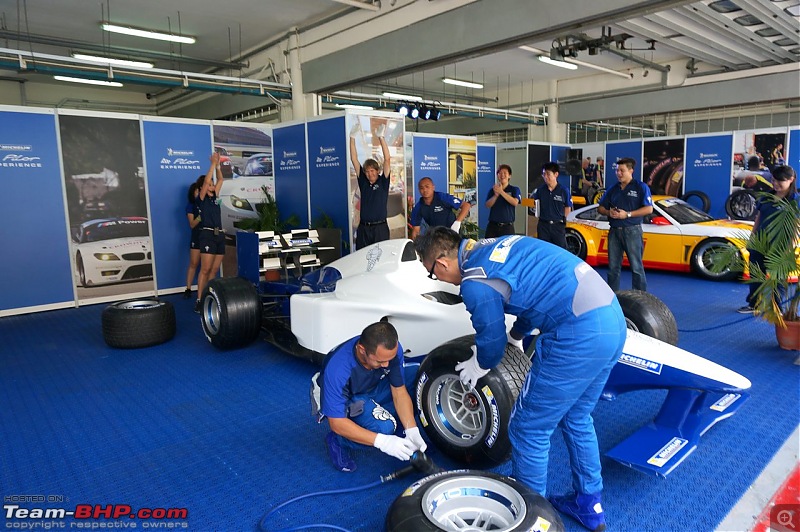



 (9)
Thanks
(9)
Thanks

 (11)
Thanks
(11)
Thanks

 (11)
Thanks
(11)
Thanks

 (8)
Thanks
(8)
Thanks

 (6)
Thanks
(6)
Thanks

 (8)
Thanks
(8)
Thanks

 (23)
Thanks
(23)
Thanks




 (2)
Thanks
(2)
Thanks


































